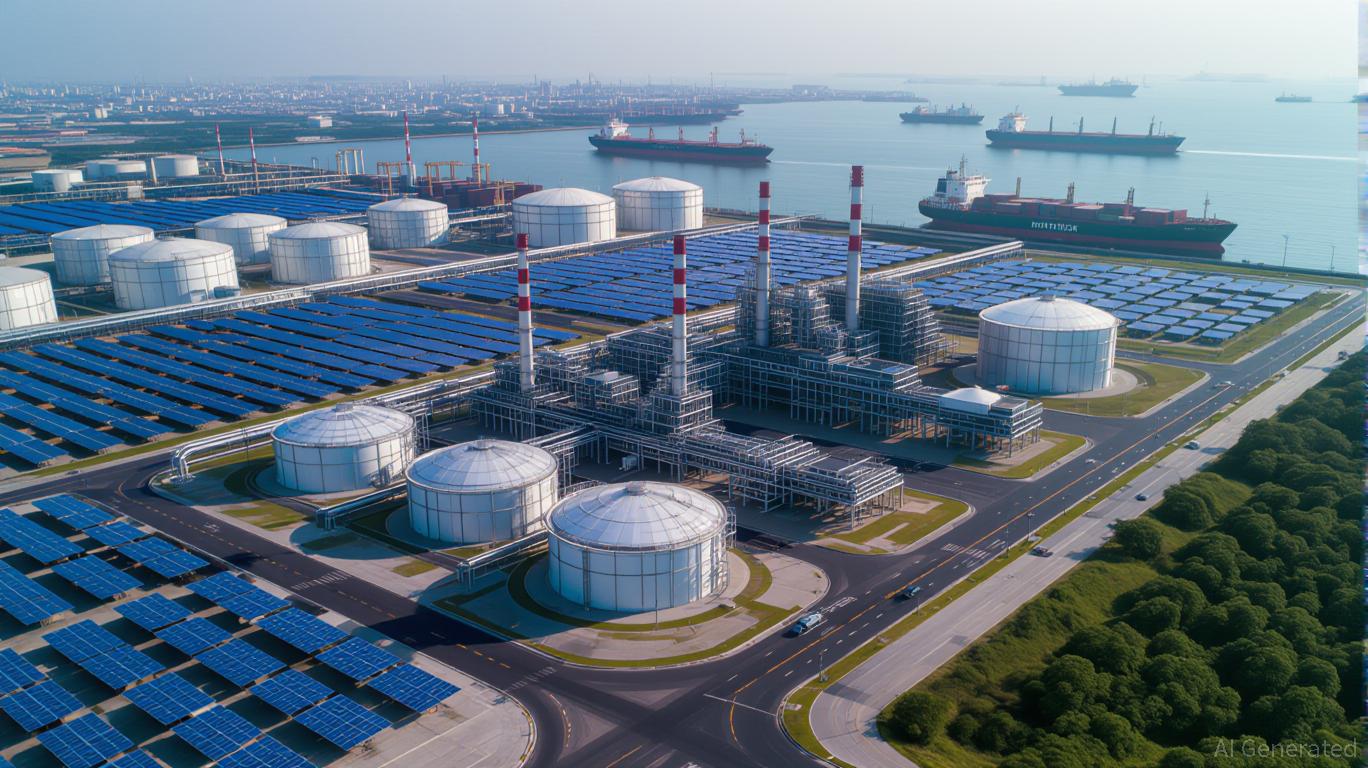In the volatile arena of global energy markets, India’s oil import strategy has emerged as a masterclass in geopolitical risk management. As the world’s third-largest oil importer, India’s ability to navigate shifting alliances, sanctions, and supply chain disruptions offers critical lessons for investors seeking resilience in emerging markets. This article dissects how India’s evolving energy portfolio—shaped by strategic diversification, infrastructure innovation, and diplomatic pragmatism—creates both risks and opportunities for capital allocation in energy and infrastructure sectors.
 The Geopolitical Tightrope: Diversification in Action
The Geopolitical Tightrope: Diversification in Action
India’s crude oil imports in 2025 are projected to reach 4.7–5 million barrels per day, with 85% sourced from abroad. Yet the composition of these imports tells a story of calculated risk mitigation. Iraq (20–23%), Saudi Arabia (16–18%), and the UAE (8–10%) remain pillars of the energy supply chain, but the most striking shift is the rise of Russia (18–20%) and the U.S. (6–7%).
The surge in Russian oil imports—from less than 2% in 2022 to 20% in 2025—was driven by discounted Urals crude and geopolitical necessity. However, this pivot has drawn U.S. tariffs (50% on Indian exports in August 2025), creating a tension between economic pragmatism and diplomatic friction. India’s response? A hedging strategy: maintaining Russian imports while diversifying into U.S. and Brazilian crude, which grew by 114% year-on-year in H1 2025.
For investors, this duality highlights the importance of portfolio resilience. Energy firms like Reliance Industries and Nayara Energy, which have flexible refining capabilities and hedging strategies, outperform state-owned entities like Indian Oil Corporation (IOC), which face rigid contracts and compliance costs.
Infrastructure as a Shield: Building Resilience from the Ground Up
India’s energy security is not just about sourcing—it’s about fortifying infrastructure against hybrid threats. The Strategic Petroleum Reserves (SPR) expansion, funded by INR 5,597 crore in the 2024–25 budget, aims to increase coverage from 9.5 days to 74 days of net imports. However, experts argue that coastal SPR sites (Visakhapatnam, Mangaluru) remain vulnerable to missile strikes and natural disasters. Inland storage and private-sector participation are now critical.
Meanwhile, India’s National Gas Grid and LNG infrastructure are transforming its energy landscape. U.S. LNG imports now account for 19% of total imports, driven by Henry Hub-indexed contracts and the National Gas Grid. This shift aligns with U.S. climate goals but introduces new risks: U.S. crude’s lighter profile complicates India’s export competitiveness, and tariffs threaten to add $9–11 billion to annual oil bills.
Renewables and Green Hydrogen: The Long Game
While fossil fuels dominate India’s energy mix (85% in 2025), the country is aggressively investing in renewables and green hydrogen. By 2025, non-fossil fuel capacity has reached 217 GW, with solar and wind accounting for 98 GW and 48 GW, respectively. The National Green Hydrogen Mission, backed by $2.3 billion, aims to produce 5 million tonnes of green hydrogen annually by 2030, displacing $11.7 billion in fossil fuel imports.
Investors should note the growing role of critical minerals like lithium and cobalt. India’s National Critical Mineral Mission, with a $343 million budget, seeks to localize processing and reduce reliance on imports. Partnerships with Guyana and the U.S.-India Critical Minerals Partnership signal a strategic pivot toward resource security.
Diplomatic Leverage: Balancing Autonomy and Interdependence
India’s foreign policy has become a key asset in its energy strategy. By leveraging strategic autonomy, New Delhi has resisted U.S. pressure to cut Russian oil imports while deepening ties with the U.S. and Brazil. This balancing act is mirrored in trade negotiations: India’s refusal to open agricultural markets to U.S. exports has been offset by concessions on cheese and almonds, preserving economic leverage.
The Shanghai Cooperation Organization (SCO) and BRICS partnerships further diversify India’s geopolitical footprint. Prime Minister Narendra Modi’s attendance at the 2025 SCO summit in China, despite border tensions, underscores a calculated effort to hedge against U.S. dominance.
Risks and Opportunities for Investors
For energy and infrastructure investors, India’s strategy presents a mix of high-reward and high-risk propositions:
1. Refining Sector: Private refiners like Reliance and Nayara Energy are better positioned to navigate geopolitical volatility than state-owned firms.
2. Renewable Infrastructure: Solar inverter manufacturers (e.g., Luminous Power Technologies) and green hydrogen producers (e.g., Reliance Industries) are set to benefit from policy tailwinds.
3. Cybersecurity and Grid Modernization: Firms involved in AI-driven threat detection and decentralized energy systems (e.g., microgrids) will gain traction as hybrid threats escalate.
4. Critical Minerals: Domestic lithium and cobalt processors could see demand surges as India seeks to localize supply chains.
However, risks remain. U.S. tariffs, cyberattacks on energy infrastructure, and geopolitical flashpoints (e.g., Red Sea tensions) could disrupt supply chains. Investors must also weigh the political risks of over-reliance on any single supplier or technology.
Conclusion: The India Play in a Fractured World
India’s energy strategy is a microcosm of emerging market investing in the 2020s: a blend of short-term pragmatism and long-term vision. By diversifying suppliers, fortifying infrastructure, and investing in renewables, India is building a resilient energy portfolio that offers both stability and growth potential. For investors, the key is to align with firms and sectors that mirror this duality—those that hedge against geopolitical risks while capitalizing on India’s energy transition.
In a world where energy security is synonymous with national security, India’s playbook is one worth studying.
